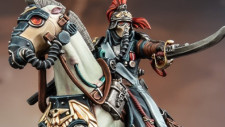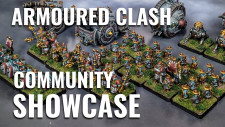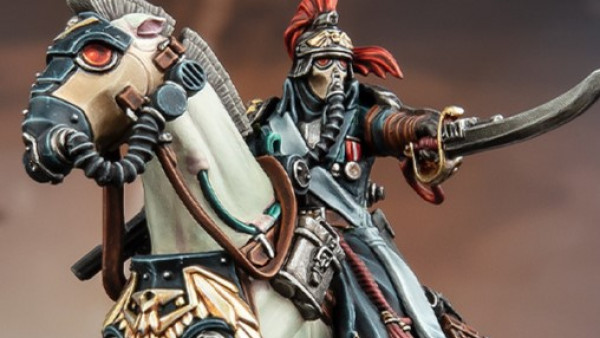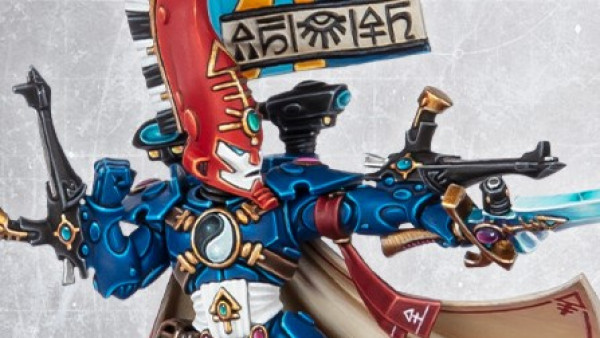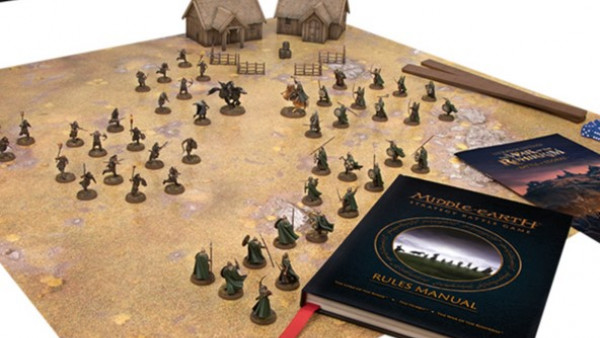Home › Forums › Historical Tabletop Game Discussions › Kit Talk 2: Here goes nothin'!
Related Games:
Tagged: 1980s, Cold War, Modern combat, Team Yankee
This topic contains 3 replies, has 2 voices, and was last updated by ![]() wittmann007 5 years, 12 months ago.
wittmann007 5 years, 12 months ago.
-
AuthorPosts
-
November 26, 2018 at 8:13 pm #1307553
About two years ago (Whoa how time flies) I had the good fortune to be asked by John to help out the BoW team with both the first Bolt Action Boot-camp, and the Team Yankee Boot-camp. Some of you might remember me as the nutter who did the kit talk videos with Warren, Oriskany, and Gianna.
From what I read in the feedback from those posts, I saw that a lot of people were genuine interested/enthralled by the how the inclusion of the game’s real life counter part (In these cases, the German Fallschirmjäger, and the Soviet GRU Spetsnaz) added more immersion and realism to their table top games.
Military History has been something I’ve had a passion for since I was a Kid, so being able to share my passion, knowledge, and add a little more of an edge to these events meant a lot, as well as the kind feedback.
So as a special treat for the community and those of you who wanted more, I’ve decided to do another!
Now… with all that soppy stuff out of the way, onto the subject matter.
At the Team Yankee camp, I brought a lot of Soviet Era equipment to show a side of the Cold War that is rarely seen, that of the Soviet GRU Military Intelligence Spetsnaz. However, as is evident throughout history, there’s two sides to every Conflict but I didn’t have the items at my disposal to emphasise this… until now.
So… queue up your Tears for Fears EP, throw on your blue Jeans and Nikes, and break open a cold PBR. You Yankee Fans might enjoy this.
C o l d W a r r i o r
The United States Infantryman of the 1980’s
INTRODUCTION
For those of you who remember the Live Stream for the Team Yankee Boot-camp, we got a glimpse of a small part of what the Soviets had lined up on their side of the Iron Curtain. But what did the Cold War’s other Major Player bring to bear to weather the storm from the Union of Soviet Socialist Republics?
The 80’s were an era of elevated tensions between East and West, but they also saw quite the advancement in Arms and Defence Technology. Some ideas were successful, such as the Personnel Armour Package and Bradley IFV, to name but a few. Others… not so much.
In this short Article, we’ll be looking at some of the equipment that made the grade, and made it’s way to the Foxholes of REFORGER and indeed full blown War.
U N I F O R M
US WOODLAND
“Make like a Tree… and Leaf”

So! Let’s begin with the basics…
US WOODLAND (Or M81 as it’s quite widely referred to) started it’s life at the Army’s Engineer Research & Development Laboratories in 1948. The pattern the R&D came up with became known as ERDL, after the facility where it was conceived, however it didn’t see any action until 1967, when it was issued to US Special Forces and RECON units during the Vietnam Conflict. ERDL remained in service with a small number of units within the US Military until it’s final operational usage during Operation Eagle Claw, and the Invasion of Grenada.
By the end of the Vietnam Conflict, US tactical focus had shifted from close range engagements to a wider, and longer range battle space: The fields of Europe.
ERDL had been designed for firefights and long range patrol missions inside a lush jungle of vines, vegetation, and shoulder height grass, and was therefore ineffective when it came to the rural heartland of Western Europe. With the issue of Battle Dress Uniform (BDUs), an updated version of ageing OG-107 uniform, the US military needed a new camouflage pattern.The solution: The old ERDL pattern was enlarged and the borders of the blotches were reworked to make them less regular. The colour was changed to a more subdued pallet in keeping with European Foliage. Enlarging the pattern also gave the pattern a high contrast, making it more noticeable at close distance and defeating concealment at closer range, reflecting the shift from close range combat, to longer range warfare.
~ + ~A R M O U R
PASGT (Personnel Armor System for Ground Troops)
“The beginning of the Kevlar Generation”Designed in the mid 1970s by the U.S. Army Soldier Systems Centre in Natick, Massachusetts, the PASGT armour package was a full replacement of both the “Steel-Pot” M1 helmet and older generations of fragmentation vests. After rigorous trials, the PASGT Package was phased into service in the early 80’s.
The Brain Bucket
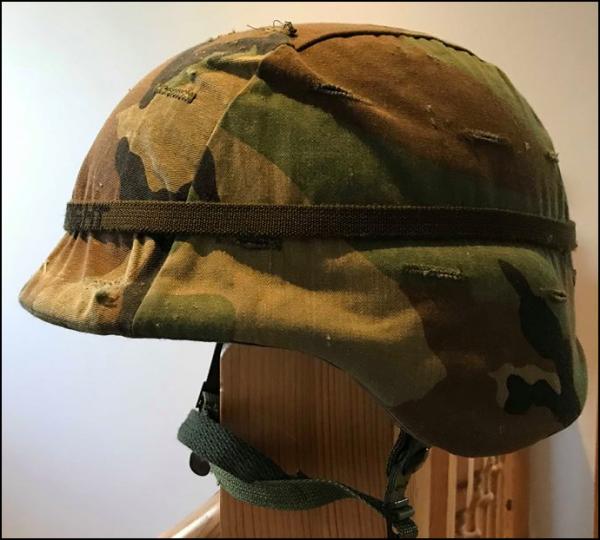
The PASGT Helmet (Known affectionately by users as the “K-Pot” or “Fritz” due to it’s distinctly Stahlhelm shape) was made of 19 layers of Kevlar Synthetic Fibre, which gave the user a Type IIIA protection level, making it safe against everything from .357 to 9×19 Parabellum. It was also complimented with a new US WOODLAND pattern helmet cover and retention band, complete with reflective “Cat’s Eyes” on the rear to reduce the chances of friendly fire incidents.
Other noteworthy additions to the K-Pot’s repertoire were the addition of “Jump Pads” for Paratroopers, cushioning the helmet from impacting hard upon the user’s head as they hit the ground, as well as an updated retention system.
~ + ~
The Vest


The PASGT Package’s Vest replaced both the Army’s M69 Fragmentation Protection Vest, and the Marine Corps’ M1955 Fragmentation Protective Body Armour and Doron Plate vest. Again, the exterior was made from US WOODLAND printed Nylon, and Kevlar was the main material in it’s protective layer’s construction, unlike it’s predecessors that used Ballistic Nylon. This also marked the beginning of the use of Kevlar as body armour for the US Military.
While it was incapable of stopping Rifle rounds, it did provide better protection against Shrapnel and small arms fire, however, it was only ever designed to stop small fragments injuring the user.
~ + ~
A R M A M E N T
M16A1
“Colt’s Mattel BB Gun gets an upgrade”
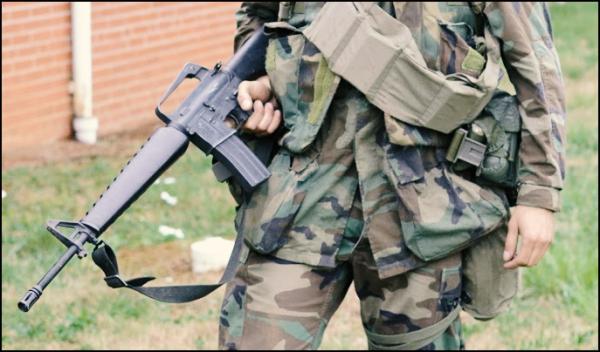
Already capable of throwing 20 rounds of 5.56mm out to an effective range of 550 meters, at 700-950 a minute on full auto, the M16 was a force to be reckoned with. However, the A1 model was a vast improvement upon the earlier model. In the early years of the Vietnam conflict, the US military had commissioned the XM16E1, the next instalment in the M16 saga. Essentially the same as the M16, the XM was given the addition of a forward assist, and a modified bolt which was machined to accommodate it.
Learning from problems that became evident in the XM16E1’s testing phase, a closed, bird-cage flash hider was installed to replace the XM16E1’s three-pronged flash suppressor which snagged on twigs and leaves in the dense Vietnamese undergrowth. Cleaning kits were produced while barrels with chrome-plated chambers and later fully lined bores were also developed. 30 Round magazines were also brought into service to improve the firepower of the GI, however the older 20 round magazines still saw usage.
With these changes in design, the reports of malfunctions slowly began to disappear. A ridge was machined into the side of the receiver on the XM16E1 to help prevent the operator from accidentally pressing the magazine release button while closing the ejection port cover.
And with that, the M16A1 was born.
Another note worthy addition was the implementation of the M203 Grenade Launcher, the only part of the ill-fated SPIW program to ever go into production. The device fastened to the bottom of the barrel, and gave the operator the ability to fire a single 40x46mm Grenade accurately out to an effective range of 350 meters.
 ~ + ~
~ + ~M60 General Purpose Machine gun
“Let the Pig run!”
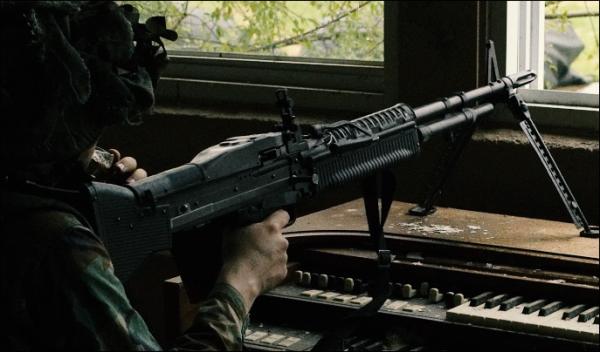
Truly, a weapon that needs no introduction.
Born out of a development process that began in the late 1940’s as a program for a new, lighter 7.62 mm machine gun derived from German guns of World War II, the M60 became the main stay Squad Automatic Weapon during the Vietnam War. Afterwards, it continued to see widespread use in the role within the US military until the implementation of the M249 SAW in 1984, whereupon it began to be phased out of the role. That being said, it still continues to be used in the US military in other roles to this day.
Weighing in at whopping 10.5 kg, or 23.15 lbs, the M60 was a belt fed, 7.62x51mm spitting, 500-650 round per minute Monster. However, this Monster came with it’s own problems…
The Weapon’s weight and poor balance were a major pain for operators, making it difficult to carry for extended periods of time. But by far the most common complaint was that the M60 was unreliable in extreme conditions, and was prone to jam and other malfunctions in it’s operation during extended firing, particularly when it was dirty.
The humidity and mud of the Vietnamese Jungle, combined with fouling and grease, and or oil, in the action of the M60 produced catastrophic stoppages unless it was kept dry and thoroughly cleaned with solvents after each period of firing. This was a tall order for many units in the field.Other major problems included receiver covers and feed trays made from very thin sheet metal that were prone to bending or breaking, driving spring guides and operating rods that were too thin, gas pistons that were too small, weapons that had expended a large amount of ammunition were also susceptible to stretching of the receiver, the inseparability of the barrel from the gas system regulator and the bipod, the quick barrel change procedure, a vastly important aspect of any machine gun used for suppressive fire, that left the crew exposed to enemy fire.
The list is… rather long.
But despite all this, the M60 performed extremely well in aerial and static roles where it could be stored in safely and regularly worked on by skilled personnel.
~ + ~
M47 Dragon
“Raytheon’s Man Portable Soviet Can Opener”
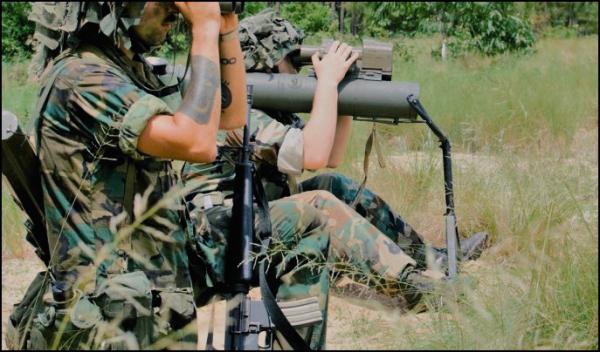
Sort of a “TOW launcher on a Sling” kind of deal.
Designed by famed defence contractor Raytheon at the request of the US military, it’s main role was to provide the Infantryman the means with which to combat the Soviet Union’s T series tanks at a maximum range of 1000 meters.
Users firing the M47 for the first time would have found it an… interesting… experience.
Once the trigger was depressed, there was a few seconds delay to the ignition of the Missile’s launch, as the chemical battery charged the initiator. This was made quite evident by the rising whine, like early flash cameras when they reset their flash. As you can guess, a sense of impending doom began to dawn on our Dragon operator, who proceeds to tense up, asking himself why the hell he has a small Saturn V sat next to his face. The missile was then fired from the launcher tube by it’s launch motor (a rocket motor that burned itself out inside the tube so as not to injure the user with residual exhaust gas). It then coasts away from the operator as infrared flare was ignited at the rear of the missile so it can be easily tracked via the SACLOS sight mounted on the tube.
After passing 30 to 50 metres from the gunner, it was propelled forward and guided towards the target by three rows of jets aligned longitudinally along the body. The rocket spun as it moved towards it’s intended target, the thrusters fired in pairs to move the missile forward as well as to keep the missile on a straight trajectory. Once airborne, the only thing the operator had to do was keep the cross hairs on the SACLOS sight on the target, and direct the missile in via the sight’s controller, which sent information on movement to via a wire spool that unravelled from the tube. An M47 moving towards a stationary target and tracked by an experienced gunner would fire the movement thrusters every .5 to 1 second, resulting in the missile’s signature ‘popping’ sound as it moved downrange. If movement was over corrected beyond the motor’s ability to keep up, the operator would cause the missile to ground itself. Likewise, if the guidance wire snapped, the missile would fire its rockets rapidly, sending the missile into a spectacular verticle ascent.
The M47 was a recoilless weapon as there was no real “kick” from firing, but having a 30 lbs (14kg) missile suddenly leave your shoulder in quite a violent manner, many soldiers tended to flinch badly enough to lose sight of their target, causing the missile to impact the ground shortly after firing.
It was not a popular weapon with US Infantrymen. Due to the missile’s relatively short range and signature ‘popping’ sound as the missile was sent towards the target, M47 Dragon crews were expected to take heavy casualties in the event hostilities broke out.
E Q U I P M E N T
ALICE (All-Purpose Lightweight Individual Carrying Equipment)
“ALICE? Who the f**k is ALICE?”

The ALICE webbing system is the end result of the LINCLOE (or the Lightweight Individual Clothing And Equipment program) whose goal was to design/develop a lightweight load bearing system in an effort to lighten the overall load a combat soldier would have to carry. The program was commissioned in 1965 and ended with the implementation of the ALICE webbing system in January 1973.
The ALICE system fighting load was comprised of:
A Belt –
Olive drab in colour and made from Nylon webbing (As was most of the webbing) with black adjusting buckles, keepers, and a belt buckle. Pouches were attached by interlocking belt strap keepers, or hooked through eyelets along the bottom of the belt. Eyelets along the top of the belt are for attaching the belt suspenders (Yoke).E-Tool –
The E-Tool carrier was moulded from EVA (A Type of Plastic), the top flap secured by two metal snaps. It’s attached to the belt by a set of two belt-strap keepers with interlocking slides (The same way as the older generation of webbing from the Vietnam War). The E-Tool itself folded up on itself, taking up as little space as possible.Med Pouch –
Self explanatory. Contained First Aid dressing equipment the Infantryman used to help his squad mates if they were injured, or if he himself was injured.Ammo Pouches –
Large enough to carry 3x 30 round M16 magazines. Again, constructed from Nylon with two internal dividers, make it easier to grab magazines in a hurry. The top was secured via two metal snaps. Two nylon loops with metal fastener snaps were located on either side of the pouches, this allowed for the addition of two Grenades that slid into reinforced tabs on either side via the “Spoon”.Water Canteen –
Acted as a pouch for the Standard Issue GI Water Bottle.Suspenders/Yoke/Y-Straps –
Connected to the belt at two points on the front and back via snap hooks. The shoulder straps were padded with spacer cloth, and each strap had a web loop and a non slip buckle on each of the straps, which allowed the height/ride of the webbing to be adjusted.On top of all this, there was also a medical backpack for Field Medics, as well as a Medium and Large ruck.
~ + ~So! That’s a relatively “brief” look at the US Infantryman of the 1980’s!
This is something I’ve been working toward for awhile, and I’m still gathering bits and pieces from all over the place, as well as learning things I hadn’t know before. I’m also aware that some members of this community are indeed part of this generation of Servicemen/Servicewomen, so if you wanted to add something/correct me on anything, by all means please feel free!
In any case, thanks for reading!
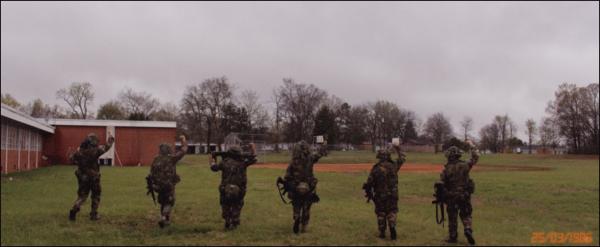 https://www.youtube.com/watch?v=CdqoNKCCt7A
https://www.youtube.com/watch?v=CdqoNKCCt7AWittmann out!
November 26, 2018 at 11:52 pm #1307608Special thanks to Southern Front Events for giving me access to their photos, and indeed a lot of the info I needed to complete this article.
November 28, 2018 at 5:41 pm #1308357Cool stuff
IIRC the Dutch army got its first taste of actual camouflage uniforms in the 80’s which looked similar to the US army version in those pictures.
At least I know my dad used to have classic dark green uniform and then it got replaced by new kit (new boots too, no more classic heavy leather boots).I do have to say that he was n0t in infantry, so there may have been time between the frontline troops and those in the rear with the gear.
November 28, 2018 at 6:39 pm #1308361Yeah, the Dutch used OD for quite some time. Even had the old M1 Steel-Pots as far as ’85!
You’re quite right, they did use the US Woodland pattern for a time also, up until they adopted their own flavour of DPM.
-
AuthorPosts
You must be logged in to reply to this topic.





























